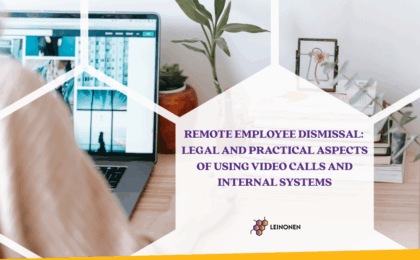What is the minimum object of contributions?
The minimum object of contributions per quarter are three minimum monthly salaries stipulated by the Cabinet of Ministers (the minimum monthly salary in 2021 is 500 Euro) – 1,500 Euro.
If the salary is less than the minimum salary of 500 Euro per month or 1,500 Euro per quarter as stipulated by the Cabinet of Ministers, the employer (incl. self-employed and payer of micro-enterprise tax) must pay the minimum contributions for their employees.
How is it determined whether minimum contributions are made for the employee?
If the employee is working for several employers or at the same time, is both an employee and a self-employed person, the income is summed up to determine whether it reaches the minimum amount.
If the person is both an employee and a self-employed person at the same time, the minimum contributions would have to be added only by the employer.
If the employee is working for several employers, and the total income of the employee does not reach the minimum contributions, each employer will have to add a part of contributions in proportion to the employee’s salary and in proportion to the time during which the employee has the status of an employee with the relevant employer.
How will the minimum contributions be calculated?
The minimum contributions that will have to be paid additionally by the employer and the self-employed are calculated by the State Social Insurance Agency (SSIA) within three months after the end of the quarter and shall be notified the State Revenue Service (SRS) until the 20th date of the third month.
During three months after the end of the calendar year SSIA shall recalculate the minimum contributions taking into account the object of minimum mandatory contributions for that year, and then shall inform SRS on overpaid minimum contributions of the employer and the self-employed person.
Thus, notifications on minimum contributions will be sent both on quarterly and annual basis in general, and the employer will have to make payments for each quarter to comply with the statutory requirement on minimum contributions.
The employers will receive the first information on minimum contributions on 20 December 2021 – for the third quarter of this year. Whereas, SSIA will perform recalculation for 2021 until 23 March 2022.
SRS will send the information on calculated minimum contributions via Electronic Declaration System (EDS).
The Employer will have the duty to make the minimum contributions for the employees until the 23rd day of the third month since the date of receipt of the notice.
Example
The employee’s declared salary in July 2021 is 300 Euro, in August – 300 Euro, and in September – 500 Euro. A total of 1,100 Euro.
SSIA will calculate the minimum contributions per quarter until 20 December 2021. On 21 December 2021, the employer receives in EDS information on minimum contributions calculated for the employee.
The employer’s additional obligations: from 400 Euro (1,500 Euro – 1,100 Euro) MSSIC 136.36 Euro (34.09 % from 400 Euro)
The Employer must pay additional MSSIC obligations until 23 March 2022.
In which cases the minimum contributions do not have to be paid?
Minimum contributions do not have to be made for the following employees:
1) a convict who is employed while serving the prison sentence;
2) a person who has reached the age entitling it to receive the State old age pension or to whom the State old age pension has been granted (including early pension);
3) a person with group I and II disability;
4) a person in whose salary tax book or the spouse’s salary tax book has been registered a child under three years of age;
5) a person in whose salary tax book or the spouse’s salary tax book have been registered three or more children up to 18 years of age or up to 24 years of age, of which at least one is under seven years of age, while the child continues comprehensive, vocational, higher, or special education;
6) a person in whose salary tax book or the spouse’s salary tax book is register a minor child which in accordance with the laws and regulations has been recognised as a disabled person;
7) a person up to 24 years of age who is studying at a comprehensive, vocational, higher (full time studies), or special educational institution, except the time when the relevant person has stopped training or studies;
8) a person employed by an employer registered with the Registry of Social Services Providers;
9) a person who is subject to social exclusion risk and is employed by an employer with a granted social enterprise status;
10) a person who provides a State-funded attendant (for a child up to 18 years of age) or an assistant service, or a care service which is funded by the local government for a child up to 18 years of age, or a care service funded within a project of the EU policy instruments for a child up to 18 years of age.
If you need additional information, please contact Leinonen!
Information prepared by Leinonen Latvia Tax & Legal Advisory Department



